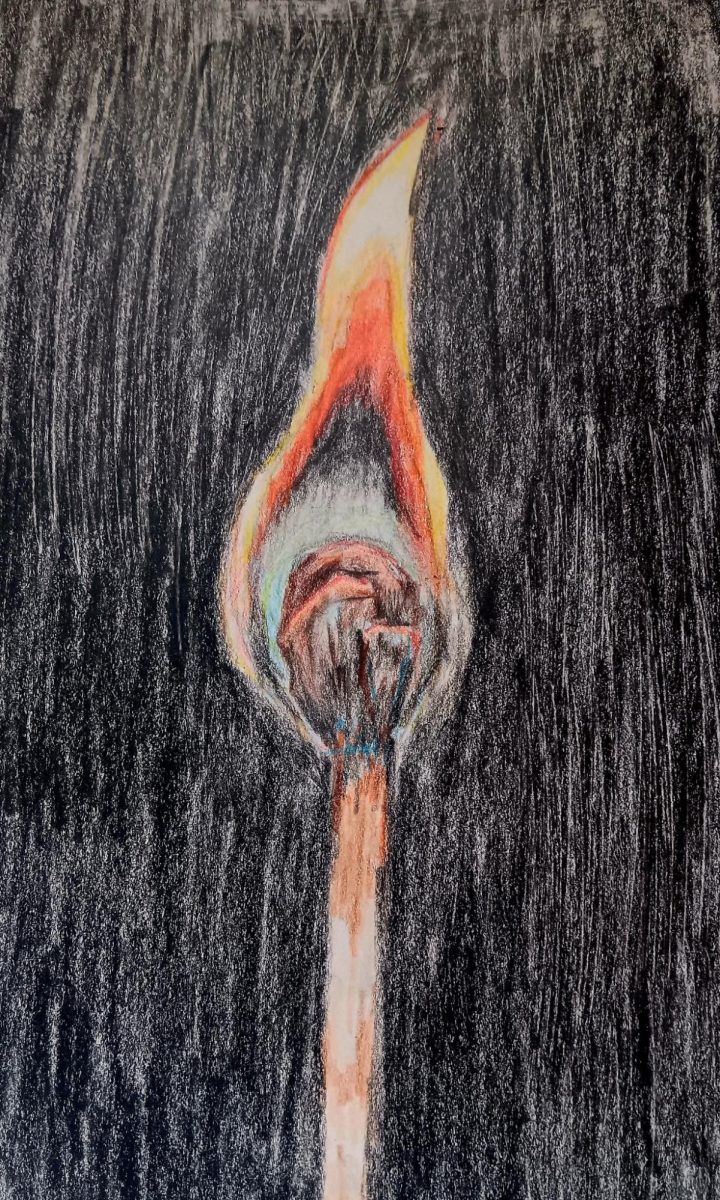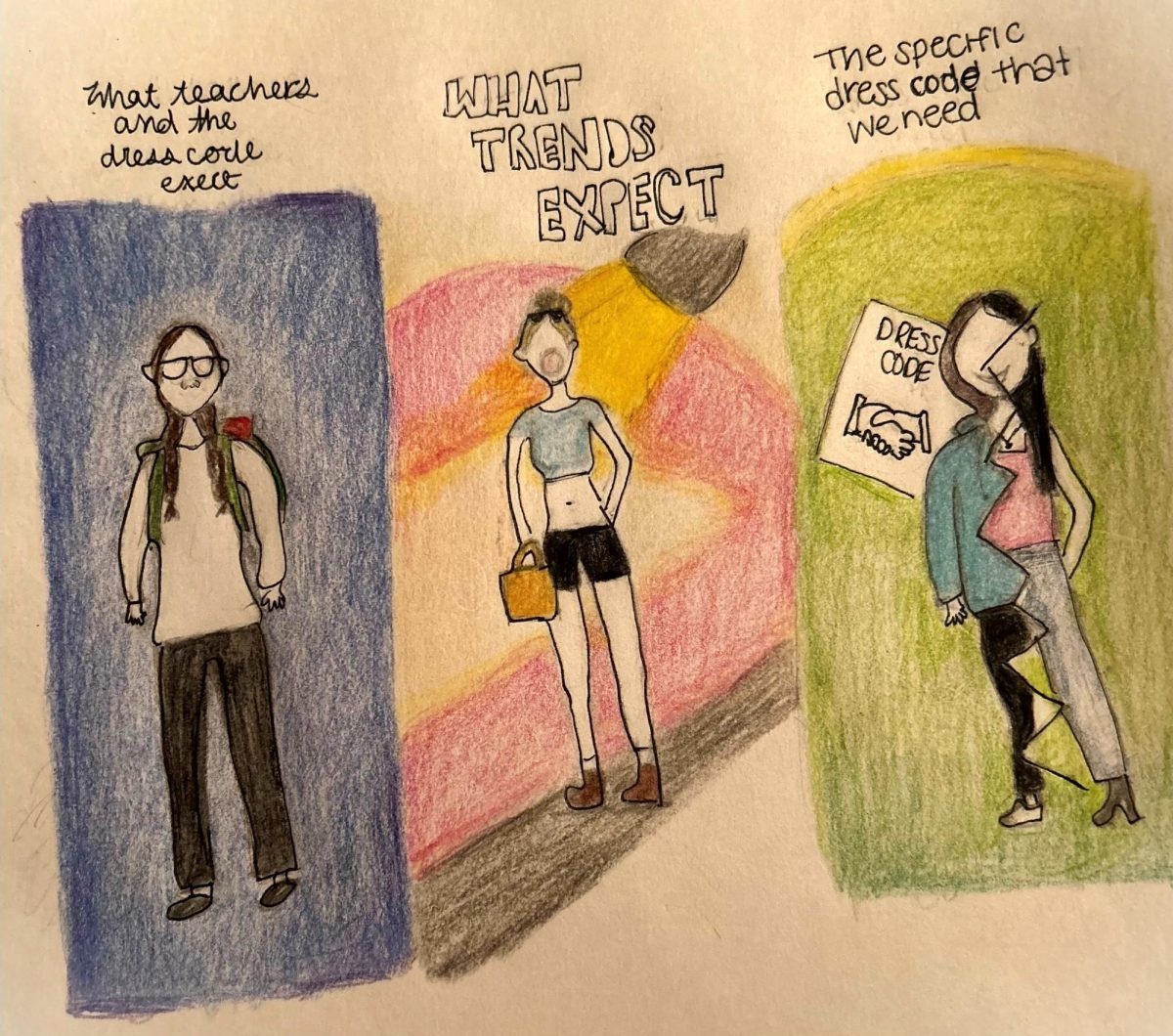Urban Outfitters. Brandy Melville. Garage. American Eagle. The thrift store. The aforementioned stores are a staple in the wardrobes of many teenage girls at LHS, including girls like myself. While my light blue Out from Under, Go for Gold seamless top may be perfect for going out to the movies with my friends on a Friday night, no height of high-waisted pants will disguise the fact that the top is not LHS dress-code compliant.
Modern clothing trends have led to increasingly more provocative clothing items. It is nearly impossible to find a shirt that is not cropped, sheer, or skin tight or a pair of shorts that is not painfully short during the warmer months. How can our current dress code be adapted in order to accommodate the changing clothing environment? The only way is to remove any discretion for enforcement by making the dress code more specific.
The main issue with the current dress code is the lack of uniformity. For example, the first rule of the dress code states that “A student’s dress, grooming and appearance, including hair style/color, jewelry, make-up, and nails, shall…not disrupt or interfere with the educational process.” What qualifies an article of clothing or a hair color as being distracting to the learning environment? How much midriff can a crop top expose before heads are turning to look at a belly button instead of a calculus problem on the board? How long can a set of acrylic nails be before it becomes an issue? There is currently no concrete idea of what or how disruptive an article of clothing can be, leaving the enforcement of the dress code completely up to any given teacher.
When there are no specifications to the dress code, students will feel a sense of freedom in how much they can get away with. The second rule of the dress code asks students to “Recognize that extremely brief garments such as short shorts, short skirts, short shirts that leave an exposed midriff, back or chest area, and see-through garments are not appropriate.” Crop tops vary vastly in the amount of fabric that is actually cropped. From my own closet, a crop top paired with high-waisted sweatpants leaves only two centimeters of my midriff exposed; in combination with a sweat jacket tied around my waist or a zip-up, one could not even tell that the shirt I am wearing is cropped. Conversely, a student wearing a crop top that could pass for a “going out top” or a bralette would raise a lot more eyebrows. If the dress code was more specific and included a requirement such as, “Shirts cannot be cropped to expose any more than 2.5 centimeters of bare midriff,” students could be less concerned about being dress-code compliant while shopping while still maintaining a distraction-free learning environment.
In the past, the school’s Girl Up Club had taken initiative to promote a positive outlook on the dress code; this included promoting self-expression, confidence, and body positivity while still remaining in line with the rules of the dress code. “I believe that here at LHS the dress code is one that doesn’t push boundaries to put our students into an uncomfortable place. At LHS, our dress code is set in place to keep things like graphic t-shirts and other vulgar sayings out of the halls,” said Girl Up Co-president Dea Pulatani. An argument that one may use to refute having a more specific dress code is that it would inhibit self-expression, but in actuality, it would do the opposite. By providing students with more specific guidelines, students could buy the clothing they want to fit their personal style without worrying about the possibility of being “dress coded.”
Pulatani presented an interesting perspective in that the dress code is not just the stereotypical “harping on girls about how much of their bodies are being exposed.” In many ways, the dress code is enforced in order to keep a safe and positive learning environment; many of the other rules of the dress code are followed well, as reported by principal Matthew Sarosy. “Students do not wear clothing that depicts inappropriate imagery, such as alcohol or drugs. Students also do not wear hats in the building. Those are the parts of the dress code that are complied with the most,” Sarosy shared. It is clear that students have no issues discerning what is categorized as vulgar in terms of imagery on clothing. Why, then, is the dress code so vague in terms of how students’ bodies are displayed?
This answer lies in how teachers throughout the school enforce the dress code. Closeness between students and teachers, along with the way in which the students’ bodies are exposed, play the largest factors in determining whether a student gets “dress coded” or not. For instance, an underclassman wearing an outfit that would probably fare better at a party over the weekend will likely receive a different comment from a teacher as compared to a senior who may be wearing a spaghetti-strap tank top with a jacket over it. While seniority certainly should not justify how much or how little dress code is enforced, it is still a factor.
Additionally, two girls could buy the same pair of jean shorts for the same exact waist size. If one girl, however, is seven inches taller than the other, that pair of shorts would appear more “revealing” on her. While sophomore Sophia Schoen’s personal style has caused her fairly few problems regarding the dress code and its enforcement, her peers have not always been in the same boat. “I’ve seen some staff be more understanding of the student’s discretion about the dress code, but I’ve heard stories of fellow students and friends being subject to very strict (and oftentimes unreasonable) enforcement of the dress code, creating even more conflict around it,” Schoen shared.
Although including specifics and widespread teacher agreement on when and how dress code should be enforced would certainly remedy most of the rules of the dress code that are not complied with, there is one supplementary solution: communication. “The Code of Conduct, including the dress code section, are reviewed often and has student representation in those meetings. I would welcome further student input,” Sarosy commented. Pulatani agreed: “I encourage that if students are uncomfortable or uneasy about the dress code we have in place they should reach out to someone within the faculty and have an open and honest conversation.”
The LHS dress code is in place in order to foster a safe, positive, and productive learning environment while also giving students freedom of expression. By creating more specific guidelines, adopting a widespread and uniform faculty enforcement, and encouraging communication between students and faculty, we can still explore our personal styles amidst a new fashion era.




















